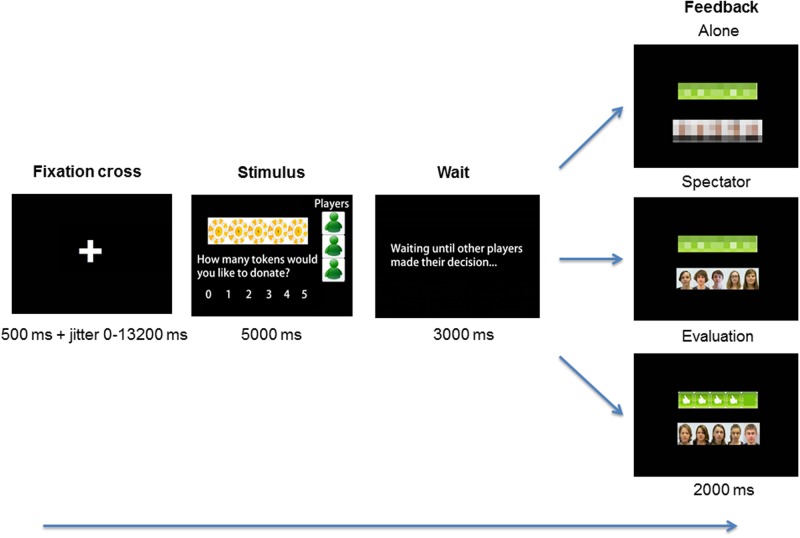Figure 1.
Illustration of the peers Public Goods Game. In each round, participants made decisions in a group about the allocation of five tokens between self and the group. The group consisted of three anonymous age-matched peers, displayed in green. These group members were unable to see the decisions of the participant. Participants played three types of rounds: (1) Alone, without spectators or feedback, (2) Spectator, with spectators present who would evaluate their decisions, but feedback was blurred, and (3) Evaluation, with spectators present who would provide prosocial feedback with ‘likes’. In this example, four out of five spectators liked the decision of the participant.

